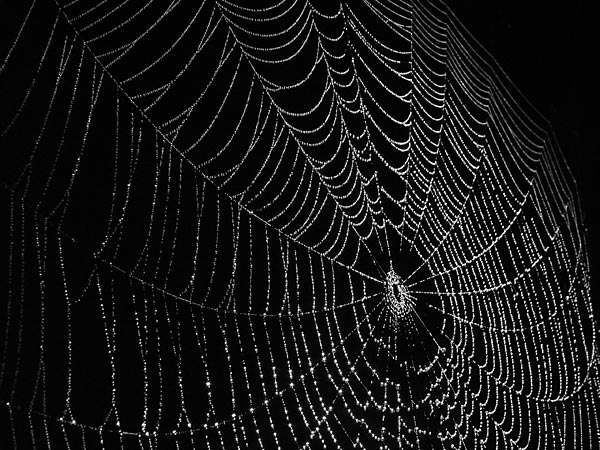Spider Silk Adhesion Depends on Surface
| Paula Marie Navarra | | Aug 14, 2014 09:08 PM EDT |
Spider Web
Scientists have found that the adhesion and tensile strength of a spider's silk strands vary depending on the surface their web is located.
They believe that understanding the structure and way of construction of spider silk is a challenge worth taking.
In this study, they examined five different spider species regarding adhesion and tensile strength of a particular silk spiders use in fixing the main thread to a surface.
Like Us on Facebook
Scientists believe that this so called "safety thread" is used to prevent them from falling when they are lowering themselves and building their web's framework.
Threads remain fixed to the surface using attachment discs which can be generated by rotating motions of the silk glands that forms a special lattice pattern.
Jonas Wolff, one of the researchers, said that when they placed the spiders on glass with Teflon and a leaf of sycamore maple, they produced attachment discs on each surface.
The silk adhered so tightly to the glass surface that the threads were torn apart before they came off, he said.
The attachment discs produced on the Teflon substrate could be detached completely, he added.
Wolff noted that on the surface of the leaf, adhesion is eventually reduced to a level where the attachment discs most often come off completely.
He also believed that this evolution is caused by the fact that vegetable surfaces often contain microstructures and waxes, making it harder for herbivorous insects like spiders to walk on them.
Spiders have to face his problem if they want to build their webs between plants, he explained.
Wolff said that the reason for this behavior is because of the competition between plants and other herbivorous insects present an evolutionary pressure causing spiders to develop better adhesives.
To date, scientists are figuring out the structure and functionality of the attachment discs.
They believe that their findings will show the great value for development of ecological adhesives.
©2015 Chinatopix All rights reserved. Do not reproduce without permission
EDITOR'S PICKS
-

Did the Trump administration just announce plans for a trade war with ‘hostile’ China and Russia?
-

US Senate passes Taiwan travel bill slammed by China
-

As Yan Sihong’s family grieves, here are other Chinese students who went missing abroad. Some have never been found
-

Beijing blasts Western critics who ‘smear China’ with the term sharp power
-

China Envoy Seeks to Defuse Tensions With U.S. as a Trade War Brews
-

Singapore's Deputy PM Provides Bitcoin Vote of Confidence Amid China's Blanket Bans
-

China warns investors over risks in overseas virtual currency trading
-

Chinese government most trustworthy: survey
-

Kashima Antlers On Course For Back-To-Back Titles
MOST POPULAR
LATEST NEWS
Zhou Yongkang: China's Former Security Chief Sentenced to Life in Prison

China's former Chief of the Ministry of Public Security, Zhou Yongkang, has been given a life sentence after he was found guilty of abusing his office, bribery and deliberately ... Full Article
TRENDING STORY

China Pork Prices Expected to Stabilize As The Supplies Recover

Elephone P9000 Smartphone is now on Sale on Amazon India

There's a Big Chance Cliffhangers Won't Still Be Resolved When Grey's Anatomy Season 13 Returns

Supreme Court Ruled on Samsung vs Apple Dispute for Patent Infringement

Microsoft Surface Pro 5 Rumors and Release Date: What is the Latest?










